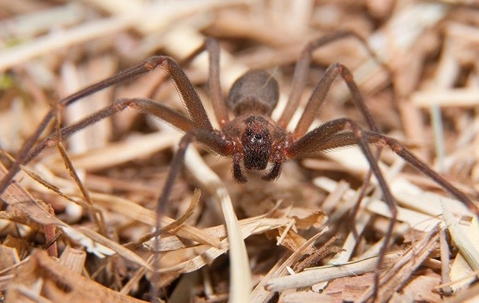We only have two potentially dangerous spiders in Texas: the black widow and the brown recluse. Of these two, you can easily identify the black widow. However, the brown recluse spider, not so much. These unassuming brown spiders can be easily confused with other common spider species in our area. But their potentially serious bite means they need to be a high priority on your Dallas pest control list.
Brown Recluse Spiders Are The Most Misidentified Spiders
Unfortunately, tons of Texas spiders can be confused with the brown recluse. Wolf spiders and huntsman spiders are often mistaken for brown recluses and vice versa because of their long legs and brown color. Sac spiders can also be confused with brown recluses for these reasons.
However, there are ways to tell if you're looking at a brown recluse. Brown recluses are plain Jane spiders. While a lot of spiders carry a fiddle-shaped marking of sorts, many of the spider species that have one of these markings also have other markings like mottled abdomens or stripes on the legs. This is not true with brown recluses. Brown recluses are generally plain brown and look almost hairless, with a slightly darker fiddle marking and unmarked legs. If you see a spider that looks like a brown recluse, but has striped legs, fuzzy hair, or a lot of patterns on it, it's unlikely to be a brown recluse.
The Potential Dangers Of A Brown Recluse Spider's Bite
All spiders are venomous, but brown recluses are one of only two types of spiders we have in the U.S. that can cause significant medical issues. Generally speaking, brown recluse venom is not potent enough to kill humans. Extremely small children or people with allergies might be in mortal danger, but this is incredibly rare.
That doesn't mean you're out of the woods, however. If you're bitten by a brown recluse, the hemotoxic venom causes necrosis in the skin around the bite. This can be as insignificant as a small black spot developing at the site of the bite, but it can also be quite extensive, leaving gaping holes in your skin and permanent scars. It can also lead to serious infection, which could be much more life-threatening than the bite itself.
The Safest Way To Remove Brown Recluse Spiders From Your Home
The safest way to get rid of spiders – including dangerous ones like the brown recluse and black widow – is to make your home unattractive to them. Spiders don't need humans for anything. They don't eat our garbage, they don't need our water, and they don't depend on our climate control. The only thing you might have in your house that could attract a spider is prey items.
Spider prey consists of many common house pests like cockroaches, flies, silverfish, ants, and more. Taking measures to keep these creepy crawlies out of your house will generally ensure that the spider population in your home is minimal.
Six Simple Tips To Prevent Brown Recluse Spiders In Your Home
To keep spiders and their prey out of your home:
- Cover trash cans at all times.
- Remove cobwebs wherever you find them.
- Reduce moisture around your home.
- Seal up cracks and holes in your home's exterior.
- Store all pantry foods in airtight containers.
- Never leave attractants like pet foods or fruit bowls sitting out.
If these measures fail and you notice an uptick in spider activity in your home, don't try to deal with potentially dangerous spiders yourself. Call the experts at Quell Pest Control to safely and effectively remove spiders and the infestations attracting them.



